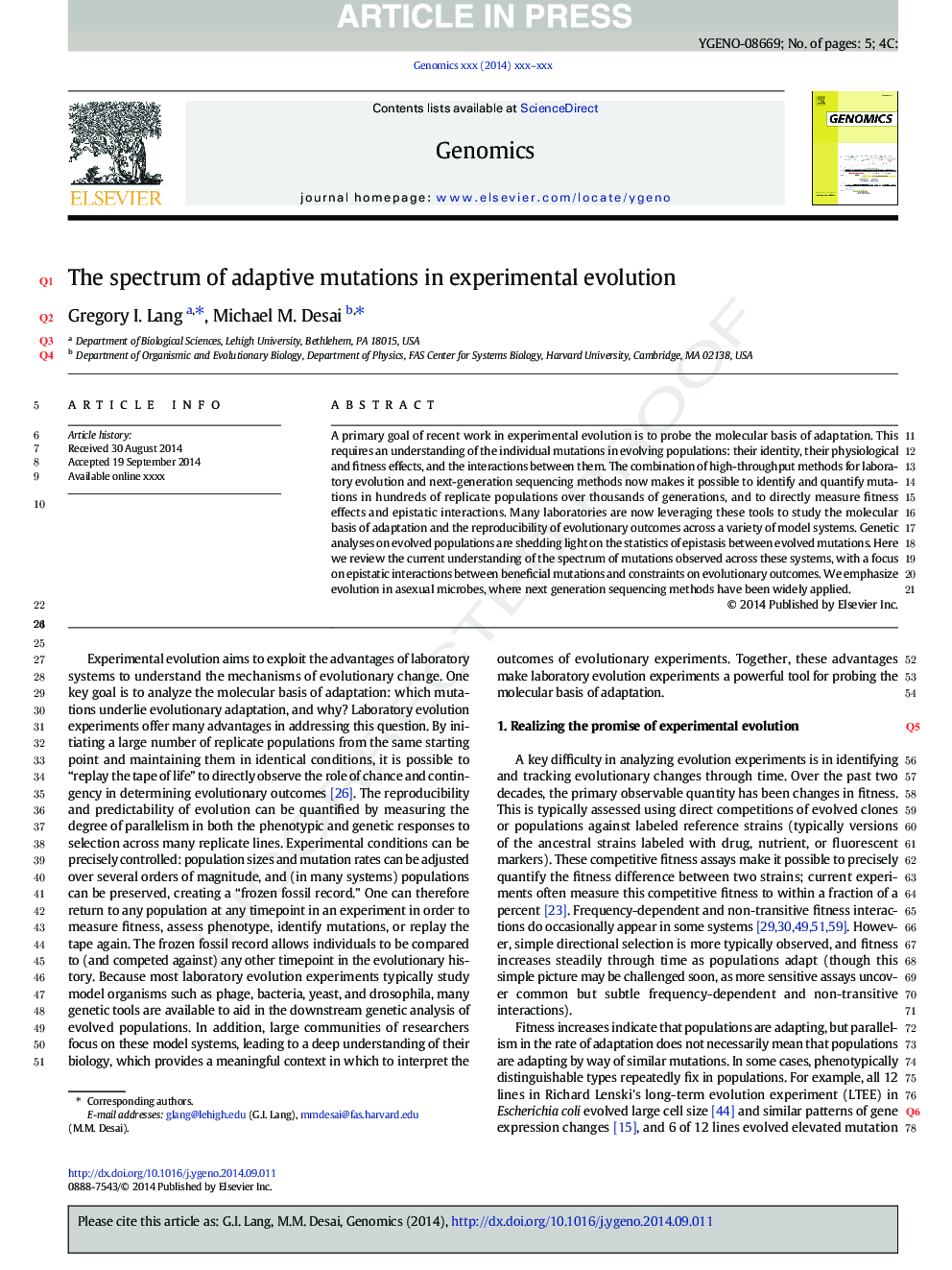| Article ID | Journal | Published Year | Pages | File Type |
|---|---|---|---|---|
| 5907933 | Genomics | 2014 | 5 Pages |
Abstract
A primary goal of recent work in experimental evolution is to probe the molecular basis of adaptation. This requires an understanding of the individual mutations in evolving populations: their identity, their physiological and fitness effects, and the interactions between them. The combination of high-throughput methods for laboratory evolution and next-generation sequencing methods now makes it possible to identify and quantify mutations in hundreds of replicate populations over thousands of generations, and to directly measure fitness effects and epistatic interactions. Many laboratories are now leveraging these tools to study the molecular basis of adaptation and the reproducibility of evolutionary outcomes across a variety of model systems. Genetic analyses on evolved populations are shedding light on the statistics of epistasis between evolved mutations. Here we review the current understanding of the spectrum of mutations observed across these systems, with a focus on epistatic interactions between beneficial mutations and constraints on evolutionary outcomes. We emphasize evolution in asexual microbes, where next generation sequencing methods have been widely applied.
Related Topics
Life Sciences
Biochemistry, Genetics and Molecular Biology
Genetics
Authors
Gregory I. Lang, Michael M. Desai,
